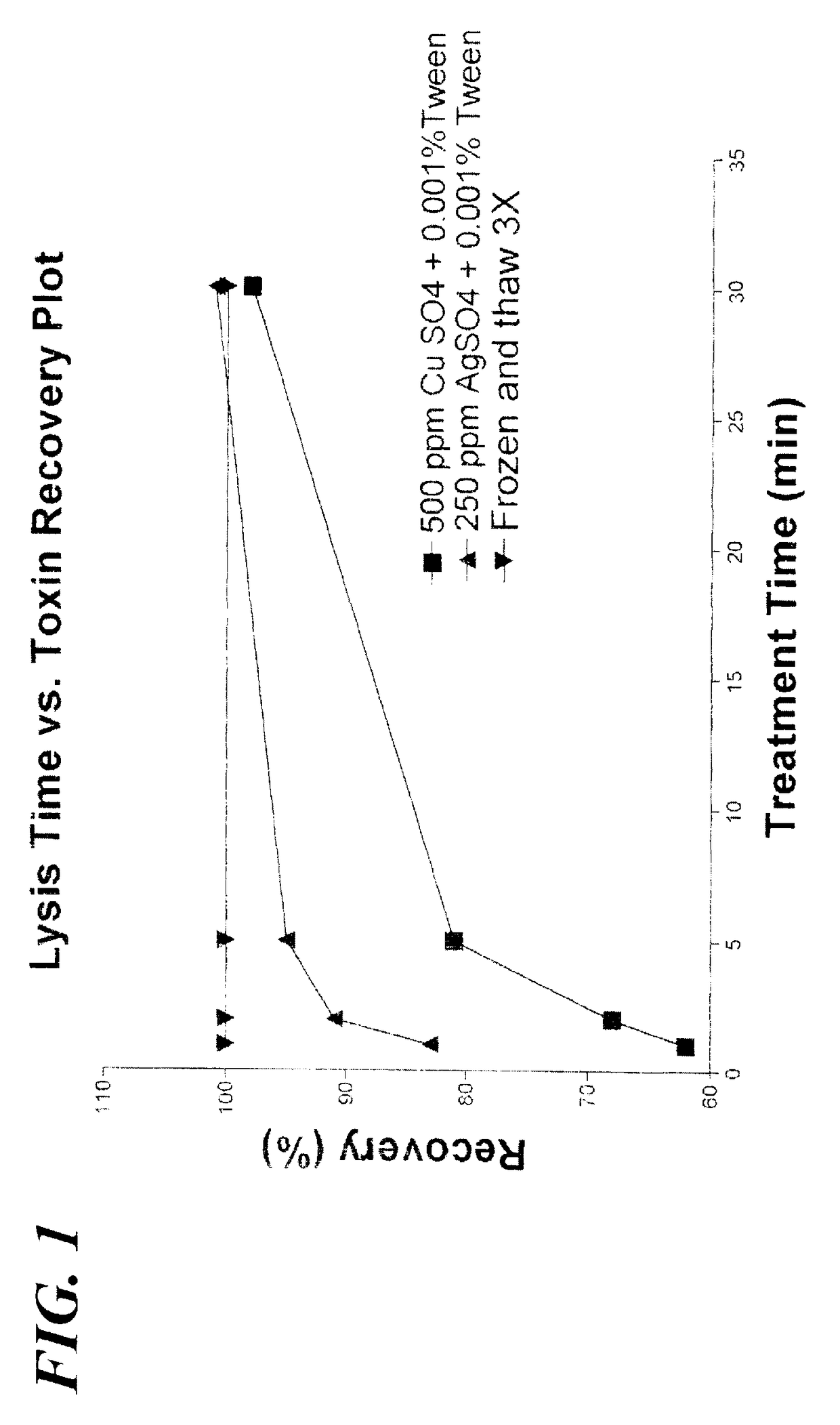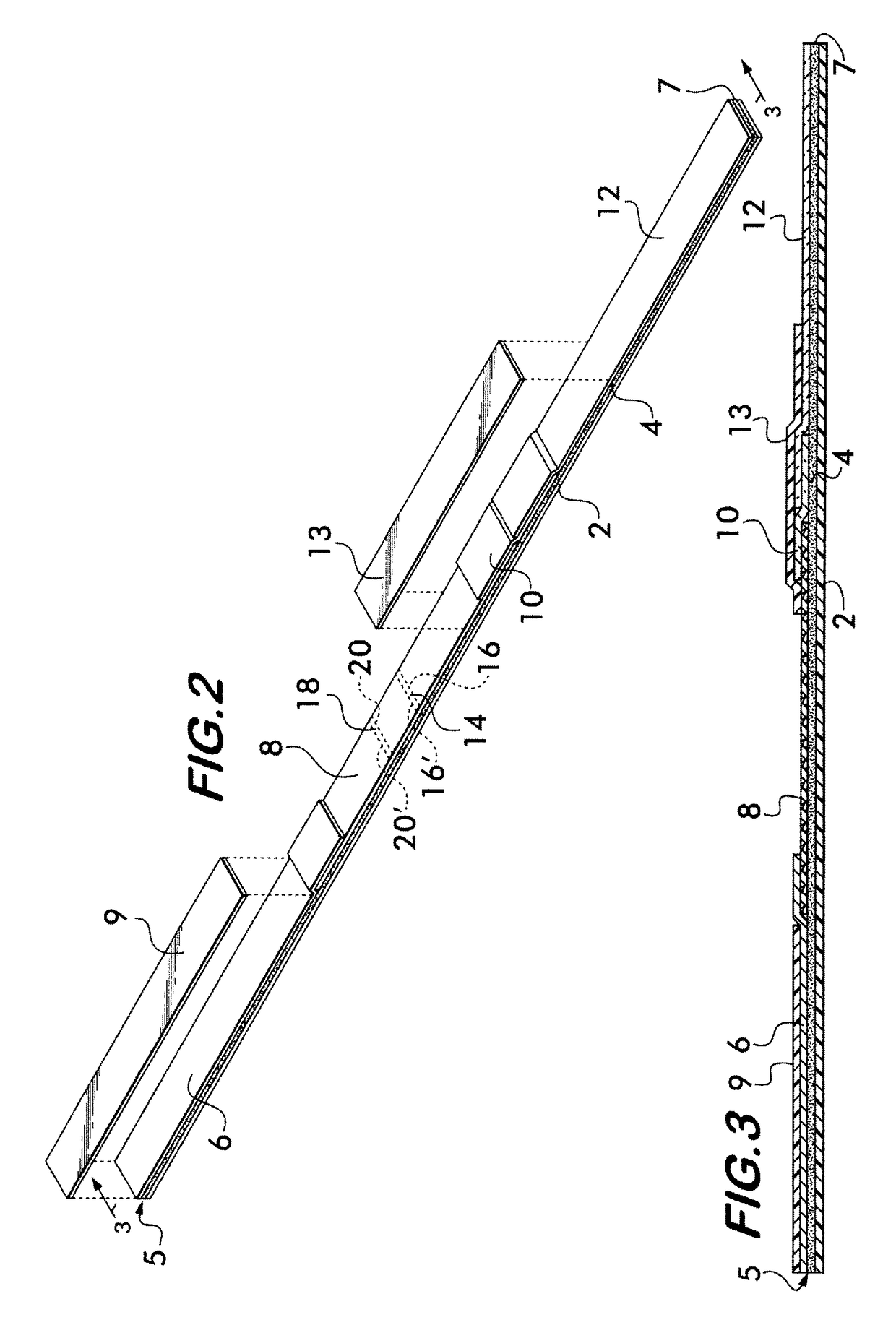Rapid analysis for cyanobacterial toxins
- Summary
- Abstract
- Description
- Claims
- Application Information
AI Technical Summary
Benefits of technology
Problems solved by technology
Method used
Image
Examples
Example
Example 1
Use of Copper Sulfate or Silver Sulfate—ELISA as the Test Assay
[0102]Aliquots of lake water were obtained from a lake in Pinellas County, Fla., and used for the data in Tables 1 through 6. A volume of 100 ul was used in the assay. Each sample, unless otherwise indicated in the Tables, was prepared as follows: to 980 uL of sample, added 10 uL of a copper sulfate solution and 10 uL of 0.1% Tween-20 solution (1:100 dilution in the sample, so that if the copper sulfate solution contained 50,000 ppm copper sulfate, the resulting concentration was then 500 ppm copper sulfate, 0.001% Tween-20) (or no such reagent, for purposes of a control). (The 0.1% Tween-20 solution was prepared by diluting a 100% Tween-20 solution by a factor of 1:999 in deionized water). The total of the combined volumes of sample and reagents was therefore 1000 uL and the combination was referred to as the releasing reaction mixture. As indicated in the Tables, in some cases, the final concentration of Tween...
Example
Example 2
Use of Copper Sulfate or Silver Sulfate—Immunoassay-Based Dipstick Procedure as the Test Assay
[0115]A dipstick version of the invention is performed by, for example, using aliquots of lake water, an example of a “recreational water”. A volume of 200 ul is used in the assay. The sample is prepared as follows: to 980 uL of sample, added 10 uL of a 50,000 ppm copper sulfate solution and 10 uL of 0.1% Tween-20 solution (1:100 dilution in the sample, so that the concentration is 500 ppm copper sulfate, 0.001% Tween-20). The total of the combined volumes is therefore 1000 uL and the combination is referred to as the post-release reaction mixture.
[0116]Alternatively, as an example, an aliquot of lake water is prepared as follows: to 50 uL of a 5,000 ppm silver sulfate, and 10 uL of 0.1% Tween-20 solution were added to 940 uL (1:20 and 1:100 dilutions respectively in the sample, resulting concentration is 250 ppm silver sulfate, 0.001% Tween-20). At the end of the reaction time wit...
Example
Example 3
Use of Silver Sulfate—Immunoassay-Based Dipstick Procedure as the Test Assay
[0122]The dipstick assay with gold conjugate on the conjugate pad is described in Example 2 using copper sulfate. Such an assay can also be used with silver sulfate or other metal salts. The dipstick assay with the gold conjugate in the microcentrifuge tube is described in this example, Example 3, using silver sulfate. Such an assay can also be used with copper sulfate or other metal salts.
[0123]A dipstick version of the invention can also be performed by, for example, using aliquots of lake water and the dipstick shown in FIGS. 2 and 3, but without anti-microcystins antibodies (either unlabeled or labeled, such as with colloidal gold particles) in the conjugate pad (10). This approach is preferred to that described in Example 2.
[0124]The sample is prepared as follows: to 900 uL of sample, added 100 uL of a silver sulfate / Tween-20 solution (5,000 ppm silver sulfate plus 0.01% Tween-20 solution such ...
PUM
 Login to view more
Login to view more Abstract
Description
Claims
Application Information
 Login to view more
Login to view more - R&D Engineer
- R&D Manager
- IP Professional
- Industry Leading Data Capabilities
- Powerful AI technology
- Patent DNA Extraction
Browse by: Latest US Patents, China's latest patents, Technical Efficacy Thesaurus, Application Domain, Technology Topic.
© 2024 PatSnap. All rights reserved.Legal|Privacy policy|Modern Slavery Act Transparency Statement|Sitemap


